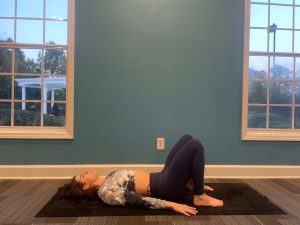Unexpected events and stress can take a toll on the body. Like most, you may be seeking a means to make it disappear. Although we cannot control external circumstances, we can be more mindful to ways in which we react. Understanding a few basics of the nervous system can begin to shed some light on a solution.
According to Medicine Net, there are 4 functions of the nervous system.
- Receiving sensory information
- Interpreting sensations
- Inclusion of information from all regions of the body, and dissecting it
- Responding to stimuli

Core Clinics identifies two parts of the nervous system involved when processing stress, the sympathetic and parasympathetic nervous system. Each playing a very important role.
As mentioned by Merck Manual, the sympathetic nervous system prepares the body for what is perceived as a threat which can result in an increased heart rate and dilated airways for easy breathing. Whereas the parasympathetic conserves and restores, slowing the heart rate and decreasing blood pressure.
While it is healthy for the body to experience stress, it can be detrimental to your health if it becomes stuck on repeat. If we are more mindful in the ways we react, then we can redirect and train our nervous system. Something as simple as being aware of our breathing patterns can bring about resilience.
Fortunately, one of yoga’s core practices is focusing on breathing. In Sanskrit, it’s defined as Pranayama, which translates to “breath control.” The following breathing techniques will assist in reducing stress and its impact on the body.
Diaphragmatic or Big Belly Breathing
Strengthens the diaphragm, increases the oxygen in the blood and reduces stress.
- Sit or lay comfortably on your back
- Place one hand on your heart, and the other hand below your ribcage, this helps to feel the body rise as it fills with oxygen
- Inhale through your nose at fully capacity, without straining or forcing
- Exhale through your lips for 4 counts, contracting your belly inward
- Repeat several times

Sama Vritti or Equal Breathing
Activates the parasympathetic nervous system.
- Sit or lay comfortably on your back
- Inhale through your nose for 4 counts
- Exhale through your nose for 4 counts
- With practice, you can work your way up to 6 or 8 counts
4-7-8 Breathing
Reduces stress and promotes restful sleep.
- Sit in a comfortable position
- Begin by exhaling all the air from your lungs through your mouth
- Inhale through your nose for 4 counts
- Hold your breath for 7 counts
- Exhale through your mouth for 8 counts
- Repeat for up to 3 more cycles (recommended for beginners, as it may cause light-headedness from breath-holding)
Nadi Shodhana or Alternate-Nostril Breathing
Promotes relaxation and overall well-being.
- Sit in a comfortable position
- Rest you left hand on your left knee, and lift the right hand to your nose
- Use your right thumb to constrict your right nostril, and exhale through your left nostril for 4 counts
- Pause for 2-3 seconds, and then open your right nostril and exhale through that side for 4 counts
- Now pause for 2-3 seconds, and then inhale through your right nostril for 4 counts
- Keep alternating this cycle for 5 minutes
- With practice, you can work your way up to 8 or 8 counts
By incorporating these breathing techniques, you can expect to approach life with more ease. If you’re interested in more benefits of yoga, check out my previous blog ‘7 Yoga Stretches to Do Every Day and their Benefits’.





